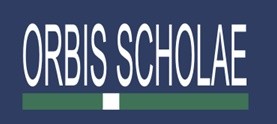Using PISA to examine educational inequality
Using PISA to examine educational inequality
Author(s): Laura B. PerrySubject(s): Education
Published by: Univerzita Karlova v Praze, Nakladatelství Karolinum
Keywords: Educational inequality; PISA; cross-national analysis;student achievement;
Summary/Abstract: Educational equity can be measured by the degree to which student academic outcomes are patterned by group differences. In more equitable national education systems, the influence of gender, ethnicity, race, immigrant status or social class on students’ academic outcomes is slight. Comparative research can illuminate how educational policies, structures and practices either mediate or exacerbate group differences in student academic outcomes. The Programme for International Student Assessment (PISA) is an especially useful cross-national dataset for measuring equity and developing theory about the influence of policy and practice on educational inequality. This paper examines the features of PISA that are useful for analysing educational inequality. It then reviews how PISA has been used to analyse educational equity, and synthesizes the findings from these various studies into a larger theoretical framework. The paper concludes by discussing how PISA could be further used in future lines of research.
Journal: Orbis scholae
- Issue Year: 2/2008
- Issue No: 2
- Page Range: 77-86
- Page Count: 10
- Language: English

